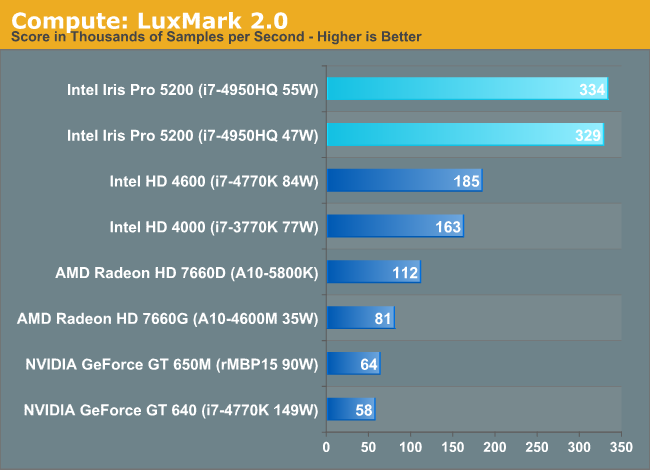And this is speculation of yours. You have no idea how capable the PS4 audio chip is, nor do you comprehend the technical information you keep repeating. Your assumption that the PS4 will be at some kind of audio disadvantage is literally baseless. It doesn't matter how advanced you imagine SHAPE to be, you have no way to make a comparison. And even if we grant your premise, your conclusions don't follow from your argument.
this is the point Brad, I'm not imaging anything, I just listen to who contributed to build SHAPE, and I hope bkillian can reply in this discussion
he and others have already talked about this topic, what are the differences between an old audio and what new shape can do, and what can do ps4 using cpu and gpu to give similar results
I just ave not given any conclusion
from what I know from confirmed specs
X1
768 ops/cycle
Clock gpu: unknown
8 core GPU
type of GPU: almost sure Jagur / customized Jaguar
Clock: unknown, maybe 1.6-2 GHz
SHAPE with 100+ full effected 3D displaced voices (different stream each headset)
memory: 8 GB RAM
+cloud computing ( +3x the local console for a final 4x, 300.000 servers around the world)
PS4
1.8 TF machine
Clock GPU: 800 MHz (18 CU)
8 cores CPU
type of CPU: Jaguar
Clock: unknown, maybe 1.6-2 GHz
Audio: unknown
memory: 8 GB GDDR5
this is what we know for sure, right?
this open up a lot of different scenarios:
a) clock of the X1 GPU= 800 MHz, cloud computing for some reasons disappear, ps4 have a monster audio block similar to SHAPE
then we should see an advantage on graphics on ps4 in the long run (lead platform the lowest denominator as always in history)
b) clock of the X1 GPU= 1050 MHz, cloud computing for some reasons disappear, ps4 have a monster audio block similar to SHAPE
graphic almost on pair 1,8~1,6 TF on gpu, same cpu etc
c) clock of the X1 GPU= 800 MHz, cloud computing gives 4x the processing capabilities of one single local console, ps4 have a monster audio block similar to SHAPE
I see developers doing the same game for both but adding some features on X1 (IA, physics, some kind of lighing)
but first party's games shining
d) clock of the X1 GPU= 1050 MHz, cloud computing gives 4x the processing capabilities of one single local console, ps4 have a monster audio block similar to SHAPE
this will probably kill the ps4 version of multiplatform games, not on first generation because -> lead platform is the low end denominator
e) clock of the X1 GPU= 1050 MHz, cloud computing gives 4x the processing capabilities of one single local console, ps4 have NOT a monster audio block similar to SHAPE
advanced audio routines relies on one or two CU within the ps4, taking his gpu @ ~1.6-1.7 TF for graphics
as (d) but on first generation there could be already an advantage for X1
so leaving apart any clock argument, it will be complex to speculate on framerate, maybe impossible as there's too many factor that we don't know about
we don't know about the main parts, let alone what we can know about bottlenecks in the systems and other important factors
this remind me the x360/ps3 question, the ps3 was talked being 2x the x360, remenber?
reality said quite the contrary, mostly of the multiplatform games looked better on x360
this is because a lot of factor are involved, are those facts or my conclusions, Brad?
and how in the world a 50% faster gpu means 50%+ FPS?
the rest of system doesn't matter?
let's take a gpu intensive game as the first PC version of crysis (I think the game that relies more heavily on GPU in our recent history)
the 6990 is not 50% but 100%+ faster than 6970
and how this is in real world?
so using a GPU 100%+ faster the gain is 4 FPS in 1024x768
(5%) and 24 FPS in 1280x1024 with AA on (
20%)
so in the worst scenario, (a) are you really think you'll see a 30 FPS VS 45 FPS or 30 FPS VS 32-36 FPS?




